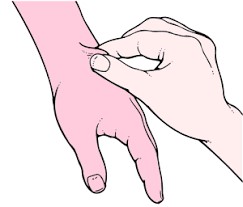A nurse at a community health clinic is planning care for an adolescent who recently learned that she is pregnant and is concerned about her ability to afford and care for her baby. Which of the following actions should the nurse take?
Contact the adolescent’s parent for assistance.
Assist the adolescent in applying for Medicaid.
Refer the adolescent to a local mental health clinic.
Advise the adolescent to place the newborn for adoption.
The Correct Answer is B
The correct answer is B.
Assist the adolescent in applying for Medicaid.
This action demonstrates the nurse’s role as an advocate and a resource person for the client, who might be eligible for financial assistance and health care coverage during her pregnancy and postpartum period. Medicaid is a federal and state program that provides health insurance for low-income individuals and families.
Choice A is wrong because contacting the adolescent’s parent for assistance might violate the client’s confidentiality and autonomy, especially if the parent is not aware of or supportive of the pregnancy. The nurse should respect the client’s right to privacy and self-determination, unless there is a risk of harm to the client or the fetus.
Choice C is wrong because referring the adolescent to a local mental health clinic might imply that the client has a mental disorder or needs psychological counseling, which could be stigmatizing and discouraging.
The nurse should assess the client’s emotional state and coping skills, and provide supportive and nonjudgmental care. The nurse can also offer referrals to other community resources, such as prenatal education, parenting classes, or social services, that might benefit the client.
Choice D is wrong because advising the adolescent to place the newborn for adoption might interfere with the client’s decision-making process and personal values.
The nurse should not impose his or her own opinions or beliefs on the client, but rather explore the client’s feelings and preferences about her pregnancy options. The nurse should provide factual information and education about adoption, abortion, or parenting, and help the client weigh the benefits and risks of each option.
Nursing Test Bank
Naxlex Comprehensive Predictor Exams
Related Questions
Correct Answer is B
Explanation
The correct answer is B.
Choice A reason: Atrial fibrillation is characterized by a rapid, irregular heartbeat and an absence of distinct P waves on the ECG, which is not indicated by the information provided.
Choice B reason: First-degree AV block is indicated by a prolonged PR interval without affecting the overall heart rate, aligning with the client’s PR interval of 0.24 seconds.
Choice C reason: Premature ventricular contraction would show an abnormal QRS complex on the ECG, which is not mentioned in the scenario.
Choice D reason: Sinus bradycardia is defined by a heart rate less than 60 bpm, which does not apply here as the client’s heart rate is 69/min, within the normal range of 60-100 bpm.
Correct Answer is D
Explanation
Choice A reason
Abdomen area is not appropriate: Assessing skin turgor on the abdomen is not commonly performed. The abdomen may not be the most accurate site for assessing skin turgor, especially in older adults, as it can be influenced by factors such as body fat distribution.
Choice B reason:
Shoulder are is not appropriate: The shoulder is not a typical site for assessing skin turgor. It is generally not used for this purpose, as it may not provide reliable results
Choice C reason:
Stomach is not the correct answer.: Assessing skin turgor on the stomach is also not commonly performed. The abdomen or stomach may not be the most accurate site for assessing skin turgor, especially in older adults.
Choice D reason
When assessing skin turgor in an older adult client, the nurse should lift the skin on the neck to evaluate its elasticity and hydration status. Skin turgor is a measure of skin's elasticity and is commonly used as an indicator of hydration in both adults and older adults.
To assess skin turgor, the nurse will gently pinch a small amount of skin on the back of the client's hand or the front of the chest (sternum). However, since the options listed do not include these areas, the closest alternative for an older adult would be the neck.

Whether you are a student looking to ace your exams or a practicing nurse seeking to enhance your expertise , our nursing education contents will empower you with the confidence and competence to make a difference in the lives of patients and become a respected leader in the healthcare field.
Visit Naxlex, invest in your future and unlock endless possibilities with our unparalleled nursing education contents today
Report Wrong Answer on the Current Question
Do you disagree with the answer? If yes, what is your expected answer? Explain.
Kindly be descriptive with the issue you are facing.
